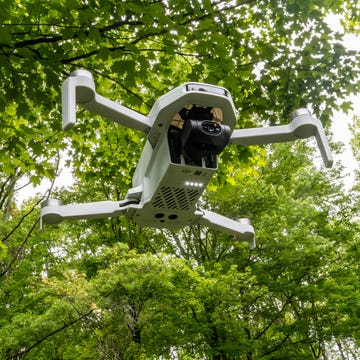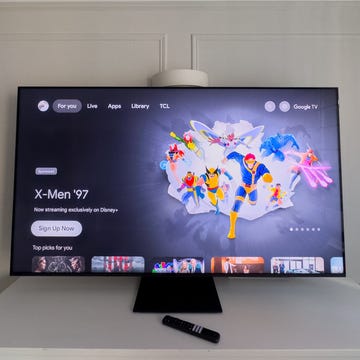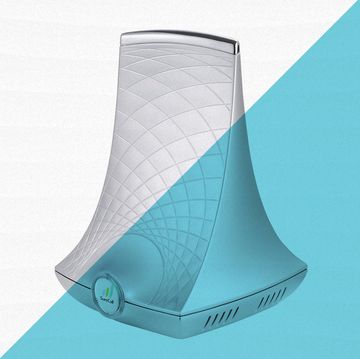First outfit your iPad with this smooth and appropriately futuristic-looking appendage. Then point your tablet in any direction and you can get a meticulous 3D model of your surroundings. The device, called the Structure Sensor, from Occipital, can map an entrance foyer or a motorcycle's cylinder head with full measurements for every edge, all to a slim 1 percent of error for the measured distances. The possibilities are nearly limitless, and so is the enthusiasm—the Structure Sensor Kickstarter campaign, which asked for $100,000, earned nearly $1.3 million.
These capabilities themselves are nothing new. The Xbox Kinect works the same way, and the Structure Sensor even uses the same sensor protocols as the Microsoft device, which were created by the Israeli company PrimeSense. And like the Kinect, Structure Sensor can absorb and interpret very sophisticated information using a simple principle.
One of the lenses on the front of the anodized aluminum body—the second circle from the left if the iPad is pointed toward you—is the main emitter, which sends out the scanning signal. That signal is a "pattern of invisible structured infrared light," says Jeff Powers, CEO of Occipital. One of the company's engineers told us "[it is] like tens of thousands of laser pointers."
The device interprets those scans as distance measurements and comes up with a reading of the object or room. The basic idea differs little from sonar. But with these sensors, thousands of the signals are sent, refracted, and interpreted at once.
One way the Structure Sensor differs from its 3D scanner predecessors is its portability. When separated from the iPad, the device weighs just over 3 ounces. With the bracket in place, the iPad we tested remained unencumbered and fully maneuverable. The reader is even forgiving to unsteady hands. As a demonstration, an Occipital engineer used the sensor to read a stuffed animal sitting on a table. He walked slowly around the end of the table, holding the sensor out to get a full 360-degree reading. The animal, a giraffe, showed up on the screen as a yellow and fully rotating model. As for the unmappable underside resting on the table, the engineer used their demo software to fill in the flat underside to produce a sealed 3D model. The sensor, he says, can read objects as close as 13 inches, and as far away as 11 feet.
The sensor's dedicated battery (it doesn't draw power from the iPad) will scan for 4 hours straight. It can stand by for more than 1000 hours. When plugged in to the Apple tablet's Lightning port, the sensor "can actually charge the iPad," Powers says. One way to take advantage of that, for example, would be to use it in an art installation. With power to the sensor, the iPad could run constantly. The whole exterior looks like it was designed to be a small sculpture, but the style and materials are founded in function. "The [anodized] aluminum actually works to disperse heat," says an Occipital engineer.
The minds behind the Structure Sensor are encouraging developers to come up with strange ways to use it. "It'd suck to spend the next five years working on software," Powers says, and "there are too many cool ideas out there." Using the sensor to scan a room, furniture shoppers could see whether a fainting couch would fit in the living room. Clothes shoppers can use a scan of their body to see whether clothes they want to buy online will fit.
Though the 3D scanner is designed specifically for the iPad, an optional USB hacker cable will let developers tap in to the Structure Sensor's brain through Android, Windows, Linux, or OS X. "We will publish specs for a bracket too," Powers says. You can print a new bracket to attach to a device other than the iPad.
As Editor in Chief, Alexander oversees all of Popular Mechanics’ editorial coverage across digital, print, and video. He has been a science and technology journalist for over 10 years and holds a Master of Arts degree from the Columbia University Graduate School of Journalism. He was previously Technology Editor for Popular Mechanics and before that, a contributor to publications including the Wall Street Journal, Wired, Outside, and was a product tester and reviewer for The Wirecutter. He has been called on to appear on live and taped broadcast programs including Today and programs on MSNBC. He lives in Pennsylvania and rides a 2012 Triumph Street Triple R motorcycle.













